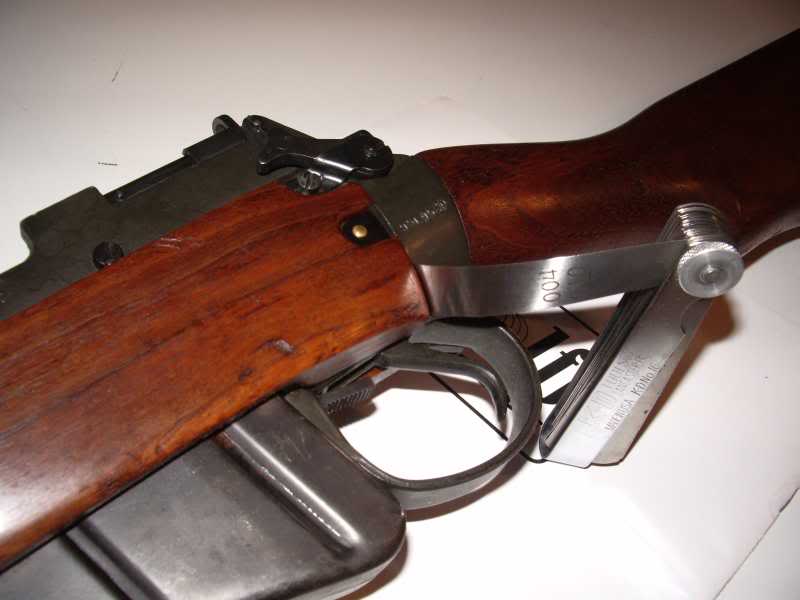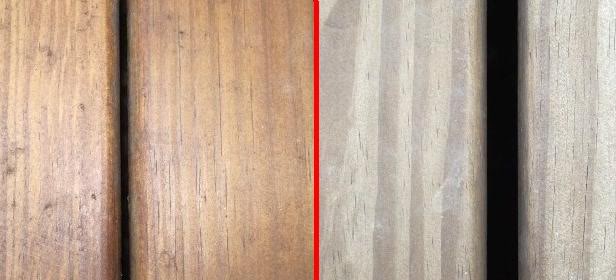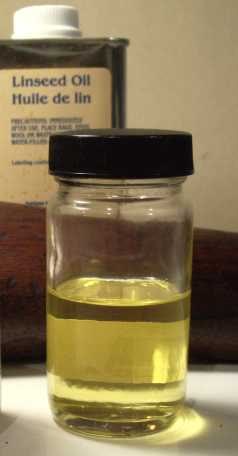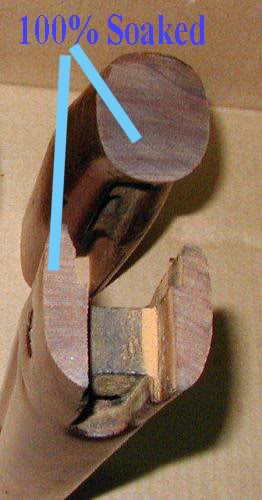
Thread: Getting the most accuracy from a No. 4 MK1*
Retrieved: 06/10/2014
I recently purchased a 1943 Long Branch No.4 MK1* serial no. 33L8897. The rifle seems to be in excellent condition with a bright, sharp 2 groove barrel. The bolt is mis-matched and has a No.2 bolt head.
My concern is the the entire barreled action pivots up and down in the stock. The pivot point being the front trigger guard screw. Is this condition detrimental to accuracy? How can I correct it? Shims, bedding, etc.?
Also this rifle has the 300/600 yard flip sight. Can I replace it with the micrometer adjustable type?
shottist
04-28-2010
There are many others on this Forum who are much more knowledgeable than I and can help you with this/these problems but my guess is that you probably need a new Butt stock. These are somewhat eccentric rifles with bedding requirements quite different than other bolt action rifles. In regard to the rear sights: I believe you have a couple of options from a military micrometer sight with elevation only adjustments to a full bore Parker Hale target sight with both elevation and windage adjustment, expensive, ($200 plus, but worth every penny). There is a windage/elevation adjustable sight available from Sarco. This is a sight originally intended for a .22 rifle and does require the enlargement of the action mounting hole.
Edward Horton
04-28-2010
Your Enfield is suffering from lack of raw linseed oil and the stock dried out and shrank. New Enfield stocks before assembly were hot dipped in a tank of RAW linseed oil and allowed to soak until the oil penetrated deeply into the wood. Also during the Enfields yearly inspection the armourer if needed would toss the stock in a hot tank of RAW linseed oil.

Did I tell you that during assembly and maintenance the stock NEVER had the new modern fake BLO (Boiled Linseed Oil that isn't even boiled anymore) applied to it. (subtle hint)
Your stock shrank and the draws area loosened up severely and your forward trigger guard screw bushing or collar is also too long.
NOTE: If you remove the bushing/collar and re-tighten the front trigger guard screw your fore stock should be snug and not rock or move. Also by inserting a feeler gauge between the very rear of the stock and receiver socket the feeler gauge thickness on each side will be your approximate shim thickness for that side of the draws during the shimming process.

Step No.1 is re-hydrating your stock with raw linseed oil, you can let it soak in a wall paper wetting tray and hope the oil soaks in and makes you bedding job simpler.

The forward trigger guard screw is the fulcrum point of the fore stock and wood shrinkage will cause the fore stock to rock like a kids teeter totter.


If you can insert a feeler gauge between the rear of the fore stock and the receiver socket you have wood shrinkage.

The area below is called the "draws" and when shimmed properly it "draws the fore stock up tight" against the receiver socket. The draws area acts like the second missing bedding screw and tightens the rear of the stock.


You can find the maintenance and bedding instructions for the No.4 Enfield here in our "Lee Enfield On-line Knowledge Libraries (Index of Articles)" below.
1991 No.4 (All Marks) .303 Rifle Manuals (Complete Set) - Military Surplus Collectors Forums
http://www.milsurps.com/showthread.php?t=3322

Draws area contact points.

And also here.



Did I say use only raw linseed oil (You can rub any type finish you want on later but you need the raw linseed oil "insided" the wood.)
A 50/50 mix of raw linseed oil and turpentine a evaporative oil distilled from pine sap will help the oil soak into the wood.



curly
04-29-2010
Perhaps this has been discussed many times (sorry) but can you explain what the difference is between Boiled Linseed Oil and "Hot" Raw Linseed Oil is? I'm guessing here but surely Boiled Linseed Oil started off life as Raw Linseed Oil but was then heated - presumably to boiling temperature. If the recommended treatment for Enfield stocks is to immerse them in Hot Raw Linseed Oil what is the difference? With the tanks of Hot Raw Linseed Oil was care taken never to reach boiling point because it would then become Boiled Linseed Oil?...
Excellent article above by the way, thank you.
RJW NZ
04-29-2010
Good observation on your part that everything pivots at the front screw area, most folks would never know that. The replies you've got above are pretty technical, but are dead on the money for being really good advice.
Resoaking the wood in oil sounds like a huge pain in the a, and if you're not inclined to do it, and the wear is not too much here's some ideas.
Its a little tricky giving advice without seeing the rifle, and in spite of that, lol, I'll toss in 2 cents worth. The pros around should correct me here too if I'm off track.
A)You can make the front trigger guard/screw area clamp onto the wood by carefully/slightly shortening the bushing that the bolt goes through. There is a proper method here on this forum, and if you want to do this, someone will point you.
b) If your front screw is clamping the trigger guard firmly to the wood when tightened, and you can make an up and down movement happen with the wood at the back of the trigger guard, then you may have something that can be fixed with simple stuff, by packing either side of the trigger under the trigger guard, or on top of the draws. Some enfields develop this looseness over time due to wood shrinkage. Sometimes shooters want this area tighter on the wood too for improved accuracy even if not too loose start with.
First, go to the front of your rifle and make that movement at the rear happen. Enfield No.4's have a floating barrel and it should be pretty much centered where it exits the front hand guards/fore end. If the looseness lets you push the barrel to the bottom of the hole, then your wear and tear is at the top of the draws. If the looseness lets you push the barrel to the top of the hole, then your wear is at the bottom of the draws. If you can do both, then you have wood shrinkage that has affected both areas.
Turn the rifle upside down and go to the back of the trigger guard; target shooters sometimes put thin strips of stiff card about one inch long on both sides of the trigger on that little ledge that the guard presses against. This takes up slack that lets the barrel go up at the front. There can be 3-4 layers here sometimes. A proper fitting trigger guard should match to its two screw holes and lay flat in the wood, without any leverage or pressure being applied. In your case tho you need to fiddle everything a bit until the slack is taken out, sometimes it will take some shooting to help it settle down.
If you're taking up slack that lets the front of the barrel go down, then you have to pack on top of the fore end wood where it touches the receiver, the draws area in one of the pics shown above. This will involve taking the fore end on and off a few times and packing it more or less, until you get it right. One of my rifles had thin brass sheet cut into patches the shape of the wood, to pack it up. The pressure of assembling the rifle usually squashes all these shims into place and they mostly stay put during future dismantlings.
(There is a set of pics here on this forum about Enfield accurising techniques that show all of these packings/shims in place on a couple of Fulton's target rifles.)
Getting the looseness out before you go shooting is crucial.
Recoil forces on a fore end that's not clamped tightly by that front screw will, and I mean will, split the wood in one shot, sometimes as far as the front band, with that front screw behaving like a wedge. This also means that pieces of split fore end wood are coming backwards, very close to your eyes, don't shoot without safety glasses. I can vouch for all of this from experience, and I got lucky without getting the stock in my eye. The left and right sides of the fore end came back behind the wrist where the serial number is, thats far, and way too close.
However, get it basically right and you're in business. There's also plenty of enfield videos on YouTube and perhaps there's something on this subject, its growing all the time.
Milled micrometer enfield No.4 Mk1 sights are $20 or so from Springfield Sporters and are easy to fit right on where your flip/flop is, with the same pivot, spring etc etc..
Edward Horton
04-29-2010
Here in the United States 95% of our BLO is NOT boiled and is nothing more than raw linseed oil with resins and dryers and other chemicals added to it. The addition of these chemicals here make the BLO toxic and requires the use of rubber gloves while working with it. (read the MSDS sheets for each product)
Real Boiled Linseed oil (BLO) is boiled in a large sealed vat and the heating of the oil caused the oil molecules to bond together in long molecular chains. This heating and bonding plasticizes the linseed oil and makes it more water proof and durable. Think of this heating and bonding process like interlocking the fingers of both hands together making your grip stronger.
If you use modern BLO with the chemical dryers added the linseed oil will not penetrate as deeply into the wood and it will dry on the surface of the wood.
Once any wood loses its moisture content the wood shrinks just like the before and after photo of my wood deck.

The problem with dry wood is its density can change with humidity and temperature changes,(warping) this causes the bedding forces to change and also your trigger pull. (thats why they moved it on the Mk.2)
Raw linseed oil only dries when it is in contact with outside air and dries very slowly. The raw linseed oil keeps the individual wood cells hydrated and prevents wood shrinkage and warping of the stock.
Also you can see in the 1940 message the soldier was to oil the stock once a month which kept the wood stock hydrated.
(your wife puts moisturizing cream on her face every day)
The reason I bring this up is because the last shipments of Enfields to the U.S. came from Turkey, and they NEVER had a trained British or Commonwealth Armourer work on them. These Enfields had wood on them as dry as a popcorn fart and need bedding work done to them.
Our British and Commonwealth cousins in most cases have Enfields that received a "local" Armourers TLC and the stocks are in better shape.
Below are a before and after bedding photos of my first Enfield that came from Turkey, the stock had dried out causing the fore stock to be loose and move. The fore stock was loose enough to cause extreme vertical stringing or shot displacement, in fact the top photo is the best group out of five groups fired and some groups having only two or three holes in the target. In both photos the range was 50 yards and the bottom target had 10 rounds fired.

If you re-oil your stock and cross your fingers you may not end up having to do any bedding work because the wood may swell back to its original size. And oiling a stock is easer than doing bedding work, scraping and shimming the draws area.
A properly maintained military stock that has raw linseed oil applied to it is more resistant to bedding changes due to moisture because oil and water don't mix and the raw linseed oil will not "lock" water inside the stock.
Some Australians with well oiled stocks have been known to even bathe with their beloved Lithgows.

I can run to the local Craft Store and buy raw linseed oil used by artists for oil painting, it is pure and contains no toxic chemicals and then rub it on my stocks bare handed and not have to worry about my family jewels falling off and end up singing in the Vienna Boys Choir.
(NOTE: In Canada they have stricter laws regarding toxic products and they have safer grades of of BLO/RLO)

Alan de Enfield
04-30-2010
Curly - there are big differences between UK and USA BLO, read the tins. USA stuff is a 'health & safety' hazard and gloves must be worn.
UK stuff is OK
curly
04-30-2010
Is our (UK) Boiled Linseed Oil OK to use or should I still invest in some Raw Linseed Oil? I have to say I've been using the same bottle of Liberon (UK spec.) artist's BLO, mixed with one third artist's pure turpentine, to wipe over the furniture of my Enfields for some years now and it seems to be doing the job fine.
RobD
04-30-2010
In the UK there is a huge variety of linseed oils available from B&Q, Homebase etc and some are completely useless, forming a completely non-setting goo. Go to an artists supplier like Hobbycraft and buy a little bottle of artists's linseed oil. It is very thick, and can be thinned with turps or white spirits. A little goes a long way.
Alan de Enfield
04-30-2010
I use "Blackfriars" BLO from my local DIY shop, goes on well (no thinning) and soaks in well.
Mine are not the best, but they are not too bad. I can think of lots of Enfields I'd rather have but instead of constantly striving for more, sometimes it's good to be satisfied with what one has...
Edward Horton
04-30-2010
Be careful about what you read on the internet, the stock below is NOT cosmoline soaked.
This is what a stock looks like that has been dipped and soaked in a tank of hot linseed oil, and the oil has penetrated deeply into the wood. It also explains why the stock shrinks when the linseed oil dries and is not replenished.


When I first came into the Enfield forums I was told to apply Behr's Scandinavian Tung Oil and it turned out to be a wiping varnish.
Below artists grade 100% pure linseed oil.

Finest quality purified alkali refined linseed oil, for us with artist's oil colors. Improves flow, increases gloss. This product may be added directly to Artist's Oil Color. It is recommended linseed oil be pre-diluted with Pure Gum Spirits of Turpentine, Grumtine, or Odorless Paint Thinner.
Always read the MSDS sheets for the product you plan to use, thanks to Parashooter I found out "Stand Oil" is real boiled linseed oil used by oil painting artists.

Polymerized linseed oil made by heating pure linseed oil to high temperatures in the absence of air. High-viscosity, non-yellowing. Intended for use with oil painting mediums, as well as diluted with conventional solvents. Improves fluidity of paint and assists in laying down (smoothing out) brush strokes. Slow drying and improves dry paint film flexibility. May be diluted with any conventional oil painting solvents.
Patrick Chadwick
01-09-2011
It pays to use PURE materials
One of the best mistakes I ever made was to buy some pure (food quality) linseed oilfrom a health shop and forget about it for twenty years. After being moved several times and spending 2 decades out of the light it now has the color and consistency of runny honey. That is the stuff I now apply dropwise to old stocks on a linen* wad dampened (NOT soaked) in pure (I hope) artist's turpentine to help it get into those dried-out pores in the wood. I also have a liter can of genuine double-boiled linseed oil that is into it's second decade, and I think that these two containers will do for as many rifles as my cellar will take.
OK, not everybody wants to wait 20 years, and I certainly didn't intend to so, so my practical advice on BLO "boils" down to: Ed is 100% correct. Modern so- called BLO is often faked by adding siccatives. Read carefully what is printed (or NOT printed) on the can or bottle. Use only pure materials. Get them from a professional or artist's paint supplier rather than the local DIY store. The quantities you use are so microscopic that a liter will last you a very long time. Pure terpentine tends to separate out some resin deposit after years. No trouble, let the resin sit, just don't try to stir it all up again.
Patrick Chadwick
01-09-2011
Don't forget the INSIDE of the stock
Athough it was implicit in what Edward wrote, I think it is worth stating explicitly that to refresh a stock the linseed oil must be applied everywhere as it is too easy to concentrate on the exterior appearance.
There seem to be two types of stock to be found on old rifles.
1) The kind with the barrel channel full of cosmoline, yak butter (my Martini- Henry stank when I bought it!) or whatever. Well preserved barrel, oil-soaked wood.
2) The kind with a barrel rusting below the waterline, and a dry-as-dust barrel channel.
The refurbishing of Type 1) has often been dealt with on these forums. Type 2) is neglected, probably because of the collector's tendency to focus on externals. But a dried out barrel channel is the ideal place for rust to develop. To get a dried/warped stock into balance again (AND preserve the barrel and action) you will probably need to soak the barrel channel, action cut-outs and all the inletting and leave it for a much longer time than the exterior would require. That is just the practical tip of a shooter, not a collector!